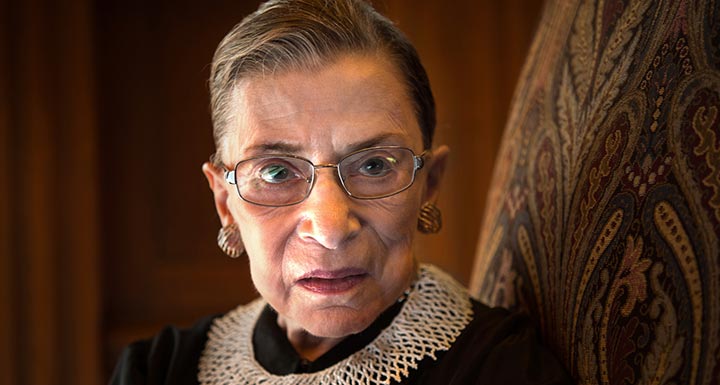
Why the Supreme Court should be the biggest issue of the 2016 campaign
Supreme Court justice and pop culture icon Ruth Bader Ginsburg left the hospital yesterday after having a heart stent implanted and expects to be back at work Monday. Despite various health issues over the years, Ginsburg insists that she is still of sound body at age 81 (her mind isn’t in question) and has no plans to retire before the end of President Obama’s term to ensure a Democratic replacement. If she keeps to that pledge, and presuming there are no other retirements in the next two years, the makeup of the Supreme Court could be a bigger campaign issue in 2016 than ever before. It certainly ought to be.
Ordinarily, the Supreme Court is brought up almost as an afterthought in presidential campaigns. The potential for a swing in the court is used to motivate activists to volunteer and work hard, and the candidates usually have to answer a debate question or two about it, which they do in utterly predictable ways (“I’m just going to look for the best person for the job”). We don’t usually spend a great deal of time talking about what a change in the court is likely to mean. But the next president is highly likely to have the chance to engineer a swing in the court. The consequences for Americans’ lives will probably be more consequential and far-reaching than any other issue the candidates will be arguing about.
As much as we’ve debated Supreme Court cases in recent years, we haven’t given much attention to the idea of a shift in the court’s ideology because for so long the court has been essentially the same: divided 5-4, with conservatives having the advantage yet liberals winning the occasional significant victory when a swing justice moves to their side. And though a couple of recent confirmations have sparked controversy (Samuel Alito and Sonia Sotomayor were both the target of failed attempts to derail their nominations), all of the retirements in the last three presidencies were of justices from the same general ideology as the sitting president. The last time a new justice was radically different from the outgoing one was when Clarence Thomas replaced Thurgood Marshall — 23 years ago.
Whether a Democrat or a Republican wins in 2016, he or she may well have the chance to shift the court’s ideological balance. Ginsburg is the oldest justice at 81; Antonin Scalia and Anthony Kennedy are both 78, and Stephen Breyer is 76. If the right person is elected and the right justice retires, it could be an earthquake.
Consider this scenario: Hillary Clinton becomes president in 2017, and sometime later one of the conservative justices retires. Now there would be a liberal majority on the court, a complete transformation in its balance. A court that now consistently favors those with power, whether corporations or the government, would become much more likely to rule in favor of workers, criminal defendants and those with civil rights claims. Or alternately: The Republican nominee wins, and one of the liberal justices retires. With conservatives in control not by 5-4 but 6-3, there would be a cascade of even more conservative decisions. The overturning of Roe v. Wade would be just the beginning.
Look at what the Supreme Court has done recently. It gutted the Voting Rights Act, said that corporations could have religious beliefs, simultaneously upheld and hobbled the Affordable Care Act, struck down a key part of the Defense of Marriage Act and moved toward legalizing same-sex marriage, all but outlawed affirmative action, gave corporations and wealthy individuals the ability to dominate elections and created an individual right to own guns — and that’s just in the last few years.
Whether you’re a Democrat or a Republican, there is probably no single issue you ought to be more concerned about in the 2016 campaign than what the court will look like after the next president gets the opportunity to make an appointment or two. The implications are enormous. It’s not too early to start considering them.
(From the: The Washigton Post)


